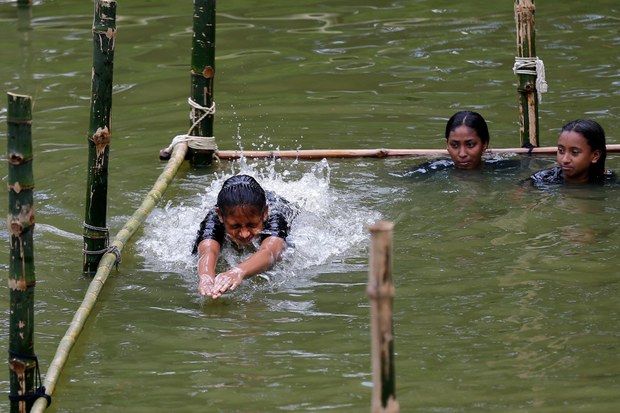Bangladesh Official Calls Drownings a ‘Silent Epidemic’
2018.08.03
Dhaka
Following a friendly soccer match last month, five school boys in Cox’s Bazar in southeastern Bangladesh went to cool off in the Matamuhuri River – and drowned.
Anwar Hosain, who lost two boys that day, is haunted with regret that he never taught them how to be safe in water.
“My two sons drowned because they did not know how to swim,” Anwar said. “That would have kept my children alive.”
Efforts by the government to improve water safety include a 2015 order that all schools and colleges offer swimming lessons for students.
But experts question if Bangladesh’s government and non-government organizations are doing enough to save as many as 50 children who drown in Bangladesh each day, according to figures from the national Health and Injury Survey 2016.
About 70 percent of the victims are 4 or younger, according to Swimsafe, a Bangladeshi organization that aims to prevent drownings in countries throughout Asia by teaching survival swimming.
“The incidence of infant mortality in the water is now a silent epidemic,” said Aminur Rahman, director of the Center for Injury Prevention Research (CIPRB), the NGO that created Swimsafe.
Aminur said prevention efforts are not keeping up with need, even though more than 700,000 children have been taught to swim since 2005.
“A national strategic committee has been formed to prevent infant mortality in water. This committee will soon convene a meeting to decide what to do,” he told BenarNews.
Discussing remedies to prevent the epidemic, Aminur said, “Children must be trained to swim. Besides, there should be a community-based awareness program to learn and teach different things including primary treatment when someone drowns.”
The 2016 national health survey found that 18,000 children 18 and younger drown each year, and 80 percent lose their lives in ponds, canals and rivers within 20 meters of their homes. The majority of drownings occur in rural areas between 9 a.m. and 2 p.m. when parents and older members of households are away working.
A 2018 World Health Organization report found that 43 percent of deaths involving Bangladeshi children younger than 4 are caused by drowning, compared to 20 percent in 2002.
An education official who asked to remain anonymous said programs to teach children to swim in school are not a reality, despite the 2015 government order.
But he also put blame on parents.
“There is no substitute for family initiative to train children to swim,” the official said.
Meanwhile, Education Minister Nurul Islam Nahid blamed educational infrastructure and social norms regarding boys and girls in the conservative Muslim country.
“It is very hard to make such a huge arrangement for swimming. But we have a plan,” he told BenarNews.
“In reality most of the schools, colleges and madrasas have no field for sports, while at least 60 percent of them should have a field. There are even fewer swimming facilities.”
He added that boys can be trained to swim anywhere but girls require facilities with some privacy.
“Considering the social condition of our country, there is no opportunity to train girls in such conditions,” he said, referring to ubiquitous ponds and lakes in the riverine country.
“That’s why we are taking our time.”
Experts identified three main causes of drowning: children cannot swim; they have little or no supervision when they are in the water; and people lack knowledge about how to rescue swimmers in danger.
Swimsafe, which reports that a child drowns every 45 seconds in Asia, said Bangladesh has the highest rate for children 4 and younger.
“It is very difficult to get accurate statistics, because not all drowning incidents reach a hospital,” the organization said.








